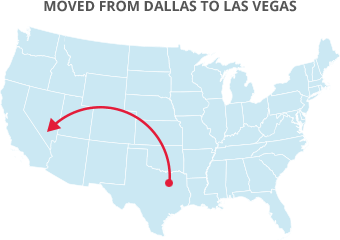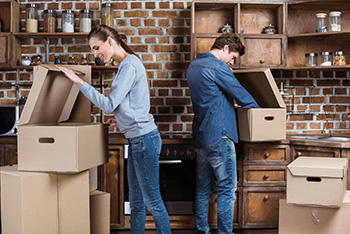

Packing your pantry is only a good idea some of the time. The most important factors to consider are the length of the move, the safety of the food items, and the expiration dates. If you are only going a very short distance, you can pack anything that will transport cleanly because there's very little delay or risk of spoilage. For long-distance moves, however, take a look at expiration dates and only pack things with more than 6 months remaining. Spice jars and closed items can be packed but open containers and bags should be set aside. You may also want to consider the cost of packing cheap canned goods when added to a long-haul move.
Once you know what in your pantry you are going to pack, begin preparing your boxes. Plastic boxes with snapping lids are best for food storage because cans can become too heavy for cardboard and plastic will deter insect infestation. Keep your pantry box as tidy and tightly packed as possible to avoid finding a mess when you arrive.
Stack the heaviest items on the bottom and line up any squared-off or boxed items tightly against each other. Use Zip-lock bags and Tupperware to seal open containers of food or ingredients. If you find it useful, use dividers made of plastic or a cut-up cardboard box to keep everything upright and secure. Mark the box as fragile so there is no confusion with your movers when they load it up. As long as only nonperishable items are in your pantry box and everything is sealed, it should be safe to transport with the rest of the boxes, but it’s always a good idea to double check with your moving company on what can and cannot be put on the truck.
The first thing to acknowledge is that things in the fridge can and will spoil if they are not dealt with properly. For the most part, refrigerator goods are only packed for a move if the move requires less than two hours of driving. That said, it's understandable to not want to throw out your collection off freezer resources and any leftover groceries on moving day, but you'll have to transport it yourself. Moving companies do not handle food that can spoil.
To move your refrigerator items, first, make sure the fridge and freezer at the new location are on and working. Then, it should be safe to pack up your cold food items into a large cooler that is about half-filled with ice. Drive the items over to the new house, load in the fridge, and enjoy not having to go grocery shopping on moving day.

Finally, there is the question of what to do with any food you can't or don't choose to take with you. There are places that would be happy to take the extra food off your hands and get it onto the plates of those in need. Food donation is one of the most important types of local charity available, so whether you have a few boxes of Rice-a-Roni or an entire pantry full of non-perishables, consider donating what you don’t need or can’t take to your new house. A-1 Freeman Moving Group proudly participates in Move for Hunger, a non-profit organization that works with moving companies to collect non-perishable food items, and deliver it to food banks across North America.
Every person moving from home to home has something left in their pantry, even if you did your best to cook up leftovers. Knowing when to pack, what can be packed, and when to donate is an important part of the moving process. With the right approach, you can get to your new home with the maximum number of safely packed non-perishable groceries and a good feeling having given the extra to those who can benefit most from it.

